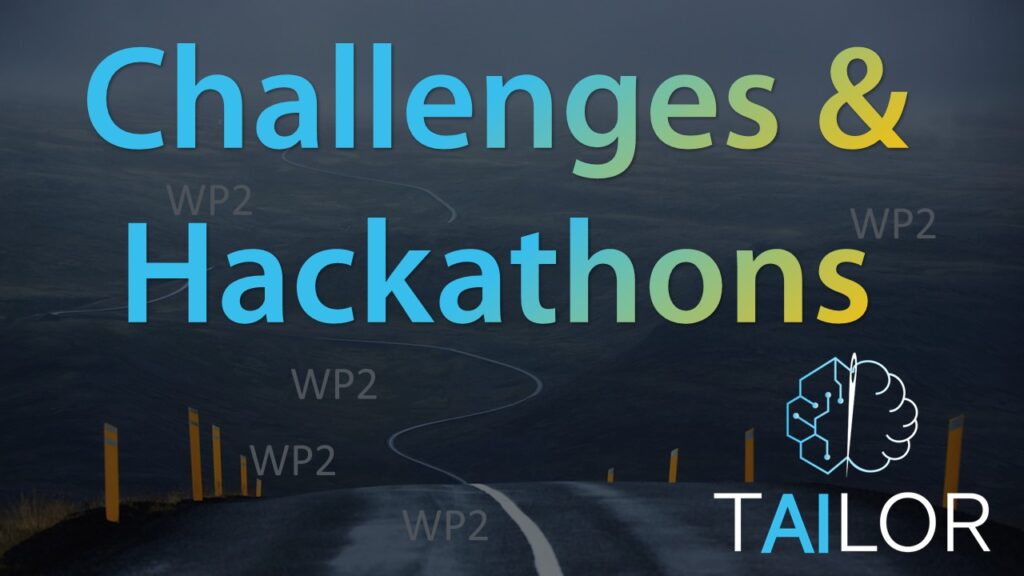The Brain Age Prediction Challenge, available on the Codalab platform, was launched as part of the NeurotechX Hackathon. In this challenge, participants are invited to use AI to predict the age of an individual from an electroencephalogram (EEG) recording time series. Such age predictions can be an important path to the development of computational psychiatry diagnosis methods. The brain age prediction challenge is running from November 4-22.
Scientific abstract
Psychiatry is the largest field of medicine for which there are still no physiological tests used for diagnosis (1). This problematic reality is coupled with the fact that for many of the most common diagnosis in psychiatry, there is an associated lower life expectancy measured in years (2). Computational psychiatry is a new approach in which algorithms are not only used to manage and organize data but also to understand hidden physiological and behavioral signals from the patient. This computational discrimination allows for both computer aided diagnosis (CAD) as well as a deeper understanding of the condition itself through generative models (3). The new diagnostic basis in psychiatry is focused on identifying measurable biological or physiological features of the subject.
Computer aided diagnosis will not be possible in psychiatry until there is normative data from which to make such decisions (4).
To solve this problem research institutions collected data about psychiatric, behavioral, cognitive, and lifestyle phenotypes, as well as collecting multimodal brain imaging (resting, task and naturalistic viewing fMRI, diffusion MRI, morphometric MRI), electroencephalography (EEG), eye-tracking, voice and video recordings, genetics and actigraphy. The deep phenotyping of such a large number of subjects will allow for an unprecedented machine-learning approach to computer aided diagnosis (CAD).
A promising computational physiological metric that was first applied to whole brain MRI data has been brain age prediction. By inferring the subject’s age from their neuroimaging data one can then use the discrepancy between their biological age and estimated age to gather some insight into their individual developmental trajectory (5). Psychiatric conditions are understood as the culmination of neurodevelopmental disorders and again MRI data was pivotal in first capturing these different trajectories. MRI is however expensive and requires certain infrastructure requirements that are difficult to justify when the need is universal.
Matching high-density EEG recordings of tasks and at rest. EEG-based brain age was first estimated from Polysomnography (PSG) recordings (6). Recently this work has been extended to using awake resting EEG recordings (7). However, these recordings have so far focused only on adults or extending into healthy old age and dementia. It is an open research question as to how predictive short duration resting EEG recordings will be for children into early adulthood.
NeuroTechX is committed to the democratization of neurotechnology and nuturing the growing community of developers, enthusiasts, researchers and scientists utilizing this technology in new and more powerful ways. This data challenge reflects our goal and your effort will be a genuine research contribution.
- Kapur S, Phillips AG, Insel TR. Why has it taken so long for biological psychiatry to develop clinical tests and what to do about it?. Mol Psychiatry. 2012;17(12):1174‐1179. doi:10.1038/mp.2012.105
- Dregan A, McNeill A, Gaughran F, et al. Potential gains in life expectancy from reducing amenable mortality among people diagnosed with serious mental illness in the United Kingdom. PLoS One. 2020;15(3):e0230674. Published 2020 Mar 27. doi:10.1371/journal.pone.0230674
- Ramezanian-Panahi M, Abrevaya G, Gagnon-Audet JC, Voleti V, Rish I, Dumas G. Generative Models of Brain Dynamics. Front Artif Intell. 2022 Jul 15;5:807406. doi: 10.3389/frai.2022.807406
- Kobak K, Townsend L, Birmaher B, Milham M, Kaufman J. Computer-Assisted Psychiatric Diagnosis. J Am Acad Child Adolesc Psychiatry. 2020;59(2):213–215. doi:10.1016/j.jaac.2019.04.021
- Cole JH, Poudel RPK, Tsagkrasoulis D, Caan MWA, Steves C, Spector TD, Montana G. Predicting brain age with deep learning from raw imaging data results in a reliable and heritable biomarker. Neuroimage. 2017 Dec;163:115-124. doi: 10.1016/j.neuroimage.2017.07.059
- Sun H, Paixao L, Oliva JT, Goparaju B, Carvalho DZ, van Leeuwen KG, Akeju O, Thomas RJ, Cash SS, Bianchi MT, Westover MB. Brain age from the electroencephalogram of sleep. Neurobiol Aging. 2019 Feb;74:112-120. doi: 10.1016/j.neurobiolaging.2018.10.016
- Engemann DA, Mellot A, Höchenberger R, Banville H, Sabbagh D, Gemein L, Ball T, Gramfort A. A reusable benchmark of brain-age prediction from M/EEG resting-state signals. Neuroimage. 2022 Nov 15;262:119521. doi: 10.1016/j.neuroimage.2022.119521
